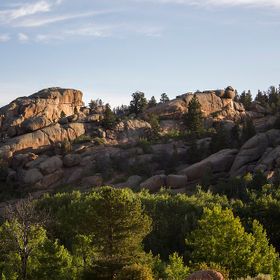

elahamla
FollowViews
476
Likes
Top Ranks
Categories
Same photographer See allBehind The Lens
Discover more photos See all
Behind The Lens
Location
This is Split Rock Lighthouse in Minnesota. I had been teaching photography at the university for several years, but had no real dedicated experience as a photographer; I had always approached the subject as a graphic designer looking for good pictures to use in a publication or ad. When I had the chance to take a sabbatical, I determined I should work on being a photographer and expanding my technical expertise. This was taken at the beginning of the sabbatical, and kicked off a different kind of love for photography that has only grown since then.Time
It took us a week to see the sights we wanted to see on the North Shore of Lake Superior between Duluth and Gand Marais, hitting two or three places a day. Earlier we had stopped at Gooseberry Falls as we worked our way north on Highway 61. This picture was taken at about 5:00 p.m. on July 18, 2013 just before the fog rolled in off the lake, which can be seen on the horizon.Lighting
Honestly, I was new enough to the technical aspects of photography that I was much more concerned with the composition, especially since natural light is all I had to work with at that time of day, and at that distance from the subject. There were some clouds, but I took that as an advantage.Equipment
This was shot with a Canon Rebel T2i, using an 18–55 mm lens, and no other equipment.Inspiration
We just had to stop at the lighthouse, which we could see peeking through the trees occasionally as we drove along the highway. It was obviously a beautiful building full of history, and every once in awhile we could get a hint that it was also a pretty dramatic setting. I didn't realize just how dramatic the cliff was until hiking down to water level. The water was calm the day we were there, but there is a picture in the visitor center of waves crashing all the way up the cliff in a storm! I knew I had to capture this scene, even if it had been shot thousands of times before. I was taken by the yellow of the lighthouse standing out so stark against that cool sky and the dark, rocky cliff face. I also saw a lot of potential drama in the clouds.Editing
I wish I could say that I captured everything I wanted in the camera, but I did have to process the image. I started in Camera Raw, but since I was pretty new to that workflow, I didn't trust it yet. So I enhanced the clarity and vibrance, but pretty much left everything else alone. In Photoshop I added a Multiply blending layer to bring up the drama of the clouds and just add to the richness in the cliff face and trees growing there. Then, because that left the whole image a bit dark for my taste, I added a Curves adjustment layer to make better use of the histogram and just improve the contrast overall. I learned a lot with this picture.In my camera bag
What I had in my bag at the time I took this picture is much different than I have now. Back then all I had was the T2i and its kit lens, 18–55mm. It was a long (and somewhat expensive) road to get where I am now. Before I was done with the sabbatical I was walking around with a camera on each hip like some Western gun slinger. I use Focus shoulder straps instead of the neck strap. I find that it saves my neck, but even more, it saved me from having two cameras hitting each other as I walked. I had learned that it was too slow to switch out lenses depending on the shot I wanted, so I ended up with a Canon T3i body for my new Canon 55–250 lens. As you can imagine, traveling with that much equipment was cumbersome, so I have simplified. Now I carry the T3i and use a Tamron 16–300 mm lens, which I find is great for most of my needs. And it's way more convenient than hauling around two cameras. I'm not THAT much of a pro!Feedback
I know that time of day is important to great lighting, but sometimes you just don't have that in landscape photography. And when you're on a schedule or there are other non-photographers waiting for you, you need to take what you can get, and make the most of it. Composition is especially critical in those situations, and shooting in RAW is a must. A well-composed image is almost more important than the subject. I've seen bad pictures of great subjects, and super pictures of very mundane subjects. Once you have a well-composed picture, shooting in RAW let's you make some rather dramatic changes to the light after the fact. It's much better to get the right shot to start with, but don't be afraid of post-processing.











































